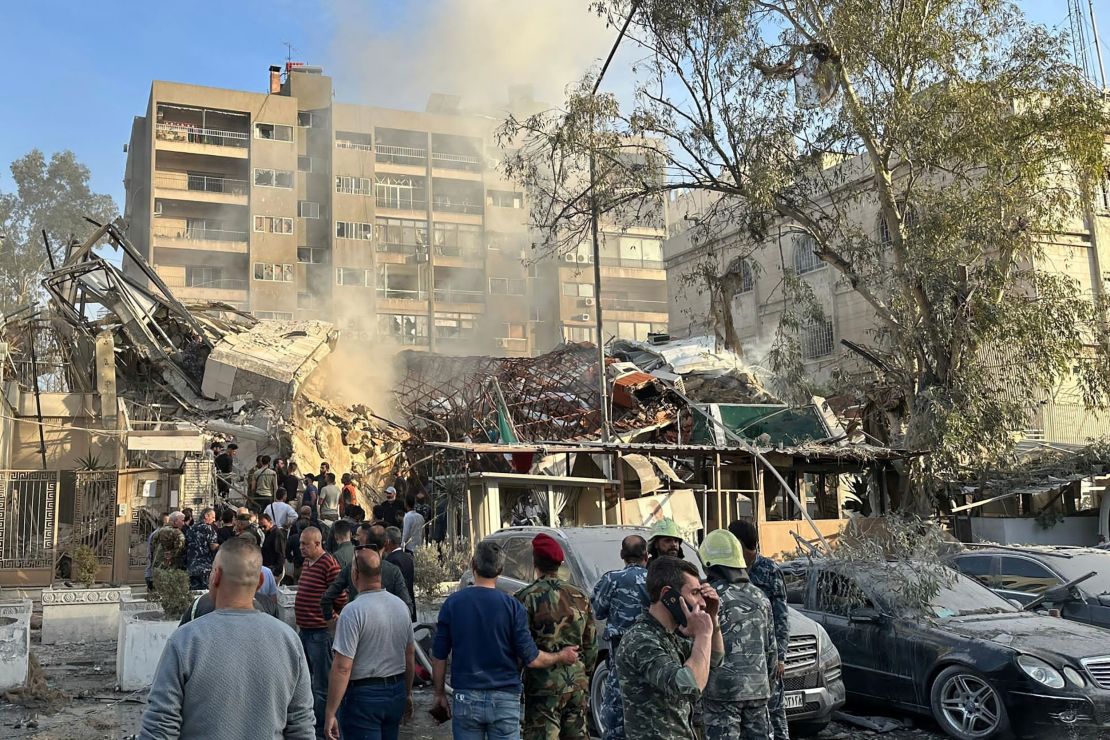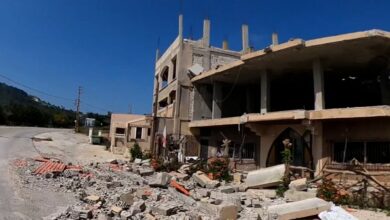
Hours before Israel launched a drone strike against Iran on Thursday night, Israeli officials gave a heads up to their US counterparts in Washington: an attack was in the works, they said, and without sharing specifics, indicated it would be carried out in the next several days, according to a senior US official.
It was exactly the message the Biden administration had hoped they wouldn’t receive. Throughout the week, US officials had urged Israel not to retaliate for Iran’s unprecedented attack five days prior, when hundreds of missiles and drones were fired from inside Iran at Israel.
US officials worried that any Israeli counter-strike could trigger an escalating cycle of direct action between the two nations that could spiral out of control.
“We didn’t endorse [Israel’s] response,” the senior official said, referencing the heads up the US received before Israel’s Thursday strike.
The back-and-forth attacks of the past week have left US officials concerned that a barrier that once existed between Israel and Iran has now been breached, leading to a new form of direct confrontation that could be infinitely more volatile and difficult to predict.
How Iran responds will now be a crucial test of whether the two nations have entered the opening stages of direct conflict — or whether both sides can step back from the brink.
There are some signs that the situation may be defusing.
US intelligence has long assessed that neither Iran nor Israel has any appetite for an outright war. Israel’s retaliatory strike appears to have been designed to be limited, striking a single military base about 275 miles from Tehran and leaving untouched two nearby facilities that are an important part of Iran’s nuclear development program.
A regional intelligence source with knowledge of Iran’s reaction to the attack told CNN that the direct state to state strikes between the two countries were “over.” Iran, this person said, was not expected to respond.
“No indications of further escalation at the moment,” the senior US official said, warning that things could change. “But all indicators suggest stepping back.”
Still, US officials are keenly aware that after the unprecedented exchange of direct fire, it may be harder than ever to predict how Iran will respond to perceived provocations.
Iran’s massive attack on Israel last week marked the first time it had fired from within its own borders directly at Israel, upending years of comfortable assumptions by the US and its allies about the limits of Iranian militancy and its willingness to attack Israel directly.
Iranian officials have stated publicly that Iran’s policy toward Israel has changed.
“We have decided to create a new equation, and that is if from now on the Zionist regime attacks our interests, assets, personalities, and citizens, at any point we will attack against them from the Islamic Republic of Iran,” Hossein Salami, the top commander of Iran’s powerful Islamic Revolutionary Guard Corps, told Iranian state TV following last weekend’s attack.
And just hours before Israel’s counterstrike Thursday night, Iran’s foreign minister told CNN’s Erin Burnett that if Israel retaliated, “the next response from us will be immediate and at a maximum level.”
“I have rarely seen a moment [in the Middle East] more combustible than it is today,” CIA Director Bill Burns said at the George W. Bush Presidential Center in Dallas on Thursday.
A long-simmering shadow war
For some former US officials deeply familiar with the Iranian regime, Iran’s unprecedented direct attack last weekend makes sense given its failure to compete with Israel in a long-simmering shadow war that has left a number of its commanders dead.
Israel has carried out numerous successful strikes against Iranian military leaders across the region, and even some officials inside Iran’s own borders. Then, on April 1, an Israeli strike on what Iran claims was an embassy in Syria killed seven officials, including two senior Iranian commanders.
“Imagine the pressure building up in the [Iranian] system,” said retired Gen. Frank McKenzie, the former commander of US Central Command. “‘Israel kills our people and doesn’t pay a price?’ I think that is a significant driver.”
McKenzie and other analysts suggested that to Iran, the April 1 attack in Syria was an escalation on top of an already untenable situation that its leaders felt demanded a stronger-than-usual response to deter future Israeli action.

One of the commanders who was killed, Mohammed Reza Zahedi, was the connective tissue between Iran and Lebanese Hezbollah, Iran’s largest and most capable proxy, according to Jonathan Panikoff, a former senior intelligence analyst who specializes in the region. Zahedi, he said, “was not a small kill.”
Leading up to Iran’s missile and drone barrage against Israel, US officials still believed Iran was likely to respond through its network of proxy fighters, as it had always done before. But as the US and its allies began to see signs that Iran was moving missiles within its own territory, it sparked a frantic rethinking across Washington about what Iran was likely to do, current and former American officials said.
It remains to be seen whether this shift in Iran’s posture reflects a more permanent change in the thinking of Iran’s Supreme Leader Ayatollah Seyyed Ali Khamenei.
“It’s not clear whether Khamenei, at age 84, has changed his longtime strategic doctrine to avoid direct confrontation with Israel, or whether this is a preview of how a post-Khamenei, military-led Iranian government may conduct itself,” said Karim Sadjadpour, a senior fellow at the Carnegie Endowmernt for International Peace.
Perhaps the best parallel for the current situation is what happened after the US strike that killed top Iranian commander Qassem Soleimani in January 2020. Within days, Iran— not one of its proxies— fired dozens of short-range ballistic missiles at American troops on a US military base in Iraq. That, too, was considered an unprecedented step that risked igniting a new and more dangerous regional paradigm.
In that instance, Iran signaled enough of its intentions that US troops were able to shelter in bunkers to minimize casualties. No Americans were killed — although dozens suffered traumatic brain injuries — and when the attack had finished, Iran messaged publicly that it considered the matter closed. The US under then-President Donald Trump chose not to retaliate further.
Assessing the true impact of Iran’s attack
In the days following the attack on Israel, some analysts suggested that Iran may have deliberately sought to avoid casualties in an effort to keep the situation from escalating; Pentagon officials stridently rejected that hypothesis.
On Saturday, Israel and its allies were able to destroy 99 percent of the Iranian projectiles before they impacted. There was little damage in Israel, and no deaths. That, combined with public and diplomatic signaling by Iran in the days leading up to the attack, has caused similar theories about Iran’s intent to circulate Washington this week.
But administration officials — as well as McKenzie and other former officials — have denied the suggestion that Iran was pulling its punches this time, either. The sheer scale of the assault itself suggests that Iran intended to kill Israelis, officials and analysts said. In many ways, Saturday was a triumph of years of military planning done in preparation for precisely this kind of hypothetical assault.
But air defense against such a vast array of threats is a complex and difficult operation, and although Israel and its allies were successful, that success was in no way a foregone conclusion, current and former officials say.
“The Iranians used the crown jewels,” McKenzie said. “Their ballistic missiles, drones, and land attack cruise missiles. And what they launched was a maximum effort, about as much as they could do. This was not signaling.”
Now, Washington and the region await Iran’s response to the Israeli counterstrike.
The risk, officials say, is profound.
“Israel and Iran are going to be starting higher on the escalatory ladder for every future moment of conflict and that is incredibly dangerous,” said Panikoff. “If Israel and Iran have a greater threat perception of each other, they’re more likely to think they have to act in a more robust and aggressive way.”




